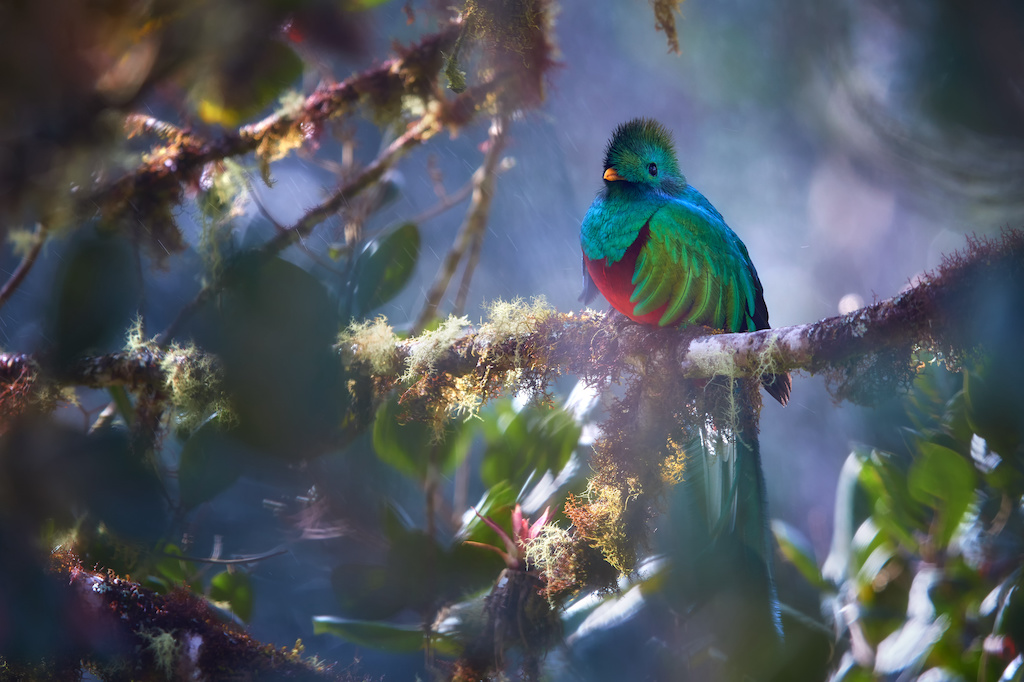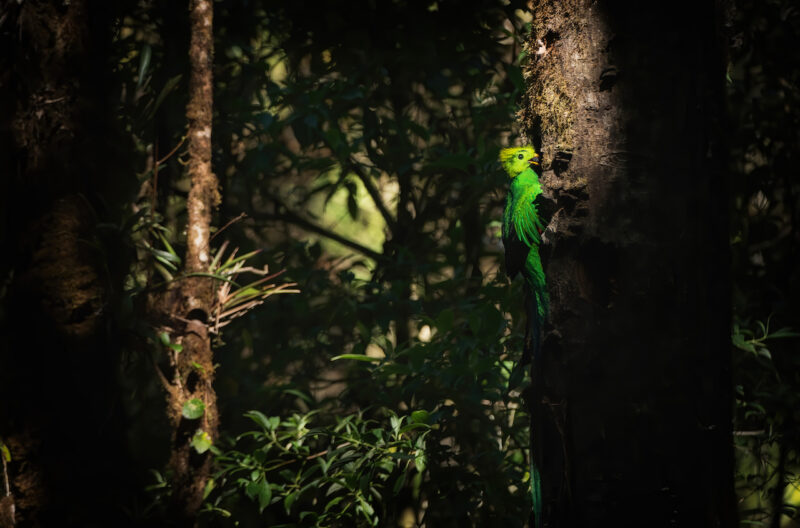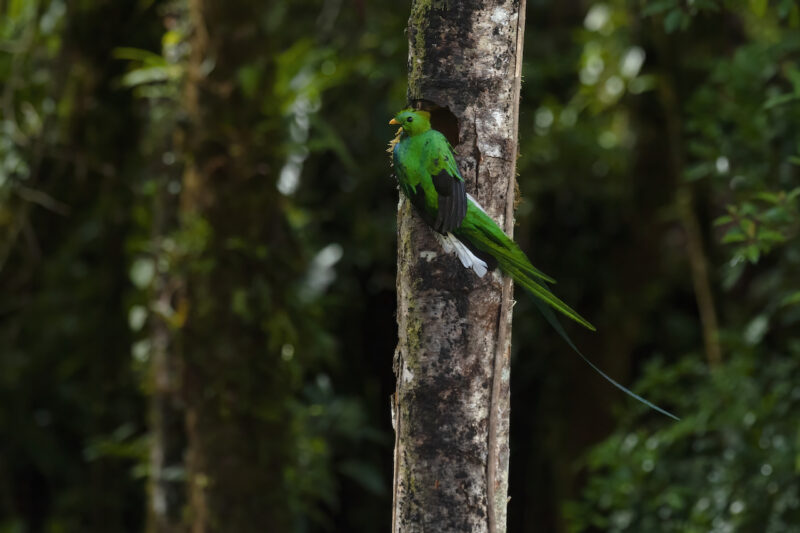Observing the Resplendent Quetzal in Costa Rica
A Guide

The Resplendent Quetzal, revered as a god, has long been coveted for its beautiful plumage. Considered by experts as one of the most beautiful birds in the world, its iridescent green plumage, red chest and abdomen, yellowish beak, and serpentine tail continue to amaze anyone who observes it. However, finding the quetzal is not an easy task, as it is endangered, and only a few remain in Mexico and Central America. Nevertheless, the population of the quetzal in Costa Rica is relatively significant, owing to the country’s protection of its forests.

If you are interested in observing the quetzal in Costa Rica, it is best to do so during its breeding season, which runs from mid-February to July. During this period, the laurel family trees and wild avocado trees produce fruits which are preferred by the quetzal.
There are several places where you can observe the quetzal in Costa Rica. Monteverde Cloud Forest, located two and a half hours from the capital city, San José, is the most famous habitat of the quetzal. It is a biological reserve that is home to 50% of the flora and fauna species of Costa Rica. It is known as one of the most diverse forests in Central America and one of the most frequented ecotourism destinations in the country.
Quetzales National Park, located 76.5 km from San José, is another protected area that is one of the best places to observe exotic birds such as the hummingbird, the trogon, the tanager, and the quetzal. It is mainly visited during the first months of the year.

San Gerardo de Dota, located 88 km south of San José, is a town that is also popular among bird watchers, since around 200 species can be seen there, including woodpeckers, fruit-eaters, precaries, and quetzals. Visitors can choose from various routes to find impressive landscapes.
Braulio Carrillo National Park, located in Heredia, a few kilometers from San José, is home to the inactive Barva volcano, which borders the Póas volcano to the west and the Irazú volcano to the east. This park offers one of the most beautiful landscapes in the country. Several virgin forests contain a wealth of wildlife in this place.
Apart from the areas mentioned above, there are some other private locations where trails can be accessed to see this magnificent bird, such as Paraiso Quetzal Lodge, Macho Gaff Cloudforest Reserve, and Savegre Hotel.
In conclusion, observing the quetzal in Costa Rica is a unique and unforgettable experience. By following our guide, you will have the opportunity to see this rare and beautiful bird in its natural habitat.
